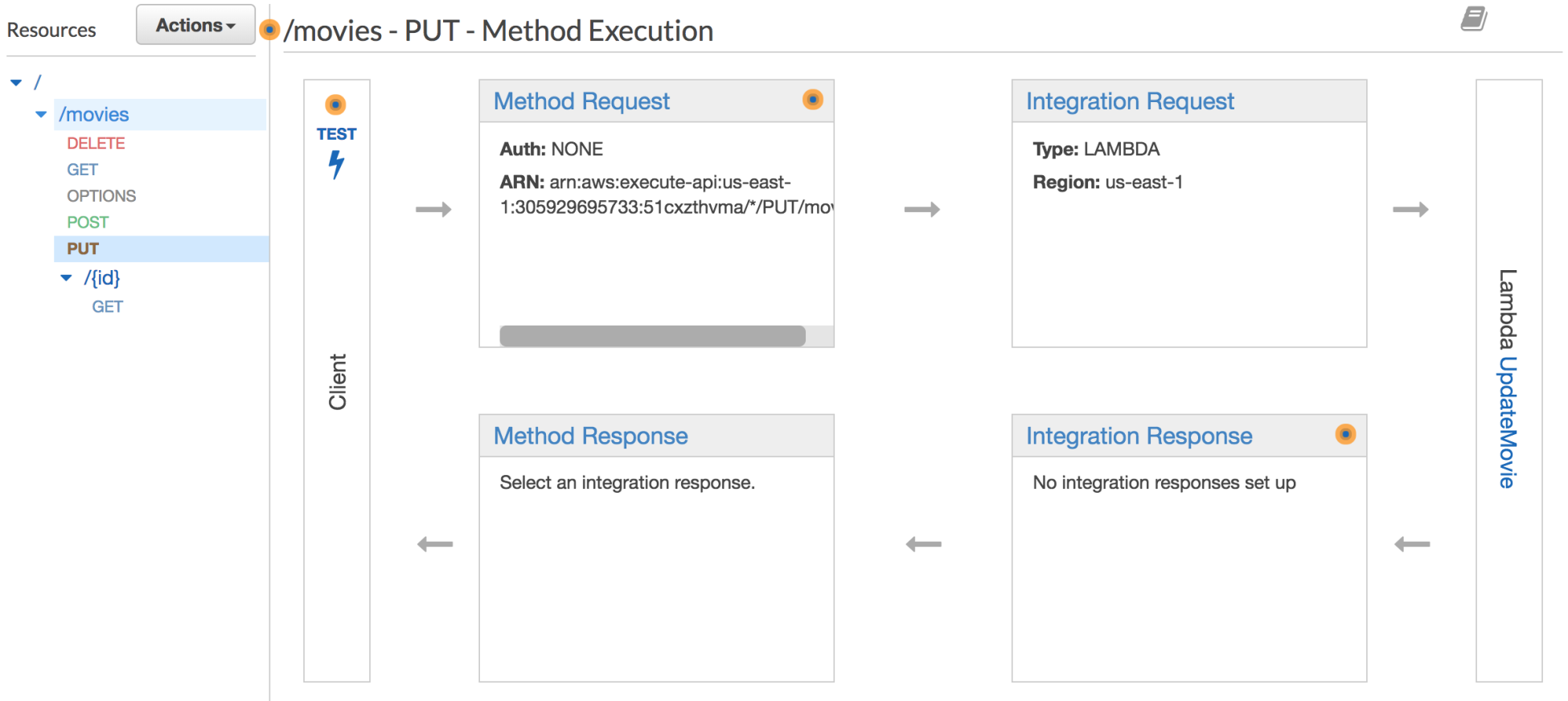Chapter 5: Managing Data Persistence with DynamoDB
- Implement an update handler to update an existing movie item.
Answer: The handler expects a movie item in a JSON format; the input will be encoded to a Movie struct. The PutItem method is used to insert the movie to the table as follows:
func update(request events.APIGatewayProxyRequest) (events.APIGatewayProxyResponse, error) {
var movie Movie
err := json.Unmarshal([]byte(request.Body), &movie)
if err != nil {
return events.APIGatewayProxyResponse{
StatusCode: 400,
Body: "Invalid payload",
}, nil
}
...
svc := dynamodb.New(cfg)
req := svc.PutItemRequest(&dynamodb.PutItemInput{
TableName: aws.String(os.Getenv("TABLE_NAME")),
Item: map[string]dynamodb.AttributeValue{
"ID": dynamodb.AttributeValue{
S: aws.String(movie.ID),
},
"Name": dynamodb.AttributeValue{
S: aws.String(movie.Name),
},
},
})
_, err = req.Send()
if err != nil {
return events.APIGatewayProxyResponse{
StatusCode: http.StatusInternalServerError,
Body: "Error while updating the movie",
}, nil
}
response, err := json.Marshal(movie)
...
return events.APIGatewayProxyResponse{
StatusCode: 200,
Body: string(response),
Headers: map[string]string{
"Content-Type": "application/json",
},
}, nil
}
- Create a new PUT method in API Gateway to trigger the update Lambda function.
Answer: Expose a PUT method on the /movies resource and configure the target to be the Lambda function defined earlier. The following screenshot illustrates the results:

- Implement a single Lambda function to handle all type of events (GET, POST, DELETE, PUT).Answer:
func handler(request events.APIGatewayProxyRequest) (events.APIGatewayProxyResponse, error) {
switch request.HTTPMethod {
case http.MethodGet:
// get all movies handler
break
case http.MethodPost:
// insert movie handler
break
case http.MethodDelete:
// delete movie handler
break
case http.MethodPut:
// update movie handler
break
default:
return events.APIGatewayProxyResponse{
StatusCode: http.StatusMethodNotAllowed,
Body: "Unsupported HTTP method",
}, nil
}
}- Update the
findOnehandler to return a proper response code for a valid request but an empty data (for example, no movie for the ID requested).
Answer: When handling input of a user (movie ID in our case), validation is mandatory. Hence, you need to write a regular expression to ensure the ID given in parameter is properly formed. The following are examples of regular expressions to validate an ID:
- Pattern for alphanumeric ID:
[a-zA-Z0-9]+ - Pattern for digits only ID:
[0-9]+
- Pattern for alphanumeric ID:
- Implement a pagination system on the
findAllendpoint using a Range header and using a Query string.
Answer: Use the Limit option in the ScanRequest method to limit number of returned items:
dynamodbClient := dynamodb.New(cfg)
req := dynamodbClient.ScanRequest(&dynamodb.ScanInput{
TableName: aws.String(os.Getenv("TABLE_NAME")),
Limit: aws.Int64(int64(size)),
})The number of items to return can be read from the request headers:
size, err := strconv.Atoi(request.Headers["Size"])




































































